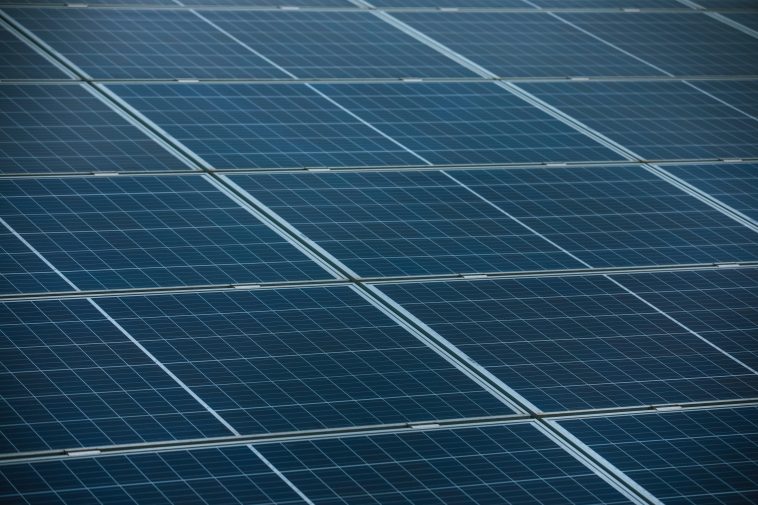Solar mini-grids can bring high-quality, renewable electricity to villages and communities in Sub-Saharan Africa that don’t have access to it. This is the least expensive way to close the energy access gap on the continent by 2030.
Solar mini-grids are better for reducing greenhouse gas emissions than diesel-powered systems and kerosene-powered appliances.
In its report Mini Grids for Half a Billion People: Market Outlook and Handbook for Decision Makers, the World Bank says that for solar mini-grids to reach their full potential, governments and businesses must work together to find mini-grid opportunities, drive down costs, and get around financing problems.
“Kenya has set up mini-grids to serve communities that aren’t connected to the main grid,” said Davis Chirchir, Cabinet Secretary Ministry. “Right now, we have about 62 mini-grids that are up and running and 28 still being built. We hope to build more mini-grids to close the energy access gap and ensure everyone has electricity access by 2030.
Five hundred sixty-eight million people still can’t get electricity in Sub-Saharan Africa. Nearly 8 out of 10 people in the world who don’t have electricity live in Africa. At the rate things are going now, 595 million Africans will still not have the internet in 2030.
Africa is still the continent with the least amount of electricity. Still, it also has the most potential for solar mini-grids, according to Gabriela Elizondo Azuela, who runs the World Bank’s Energy Sector Management Assistance Program (ESMAP). “
With solar mini-grids, people who would have to wait years for the grid to reach them can get power immediately. They could change the way the power industry works in Sub-Saharan Africa. ESMAP is working with the World Bank and advising governments to help turn mini-grids from a niche solution into a common one.
In Sub-Saharan Africa, the number of solar mini-grids has proliferated, from about 500 in 2010 to more than 3,000 today, with another 9,000 planned to be built over the next few years.
This is because the prices of crucial parts are decreasing, new digital solutions are being introduced, highly skilled mini-grid developers are growing, and economies of scale are improving. Mini-grids are on track to provide electricity in Africa for less money than many utilities.
Mini-grids are on track to provide power in Africa for less money than many utilities. Mini-grids could produce electricity for as little as $0.20/kWh by 2030, making them the least expensive option for more than 60% of the population.
Several African countries have made significant strides toward accelerating the implementation of mini-grids. In Nigeria, for example, the World Bank-supported National Electrification Project has spurred the deployment of more than 100 new solar-powered mini-grids using a market-driven approach to small grid development.
New rules and policies make mini-grids more appealing to private investors in some countries, like Ethiopia and Zambia.
The Kenya Off-Grid Solar Access Project, which the World Bank backs, aims to build almost 150 new mini-grids in areas with low electricity access rates. It uses geospatial planning, good policies and regulations, and a strong business model based on public-private partnerships.
To reach Sustainable Development Goal 7, however, we need to speed up even more (SDG7). To power 380 million people in Africa by 2030, more than 160,000 mini-grids will need to be built for $91 billion. At the rate things are going, only about 12,000 new mini-grids will be made by 2030 to serve 46 million people. This will cost about $9 billion.
Over the next seven years, the World Bank will spend more than $1.4 billion on 38 mini-grid projects in 29 countries. The World Bank’s investment plans include putting in place 3,000 mini-grids by 2029. This is expected to bring electricity to more than 13 million people
This investment commitment is expected to bring in more than $1 billion in co-financing from the private sector, the government, and development partners. In countries where the World Bank has promised to invest in mini-grids, the Bank’s investment makes up, on average, about 25% of the total amount invested in mini-grids by governments, the private sector, and development partners in each country.
The book Mini Grids for Half a Billion People: Market Outlook and Handbook for Decision Makers was made by the World Bank’s Energy Sector Management Assistance Program (ESMAP). It lists five market drivers that would help the mini-grid sector reach its full market and growth potential:
The price of electricity from solar hybrid mini-grids will be reduced to $0.20/kWh by 2030. This would give half a billion people life-changing power for just $10 monthly.
Increasing the deployment rate to 2,000 mini-grids per country per year by building portfolios of modern mini-grids instead of single projects.
Giving customers and communities reliable electricity service would require 3 million income-generating machines and appliances and more services at 200,000 schools and clinics.
Using money from development partners and government investments to “crowd in” money from the private sector could bring in $127 billion from all sources by 2030.
Setting up business environments that are good for mini-grids in key access-deficient countries through flexible and light-handed regulations, supportive policies, and less bureaucratic red tape.



